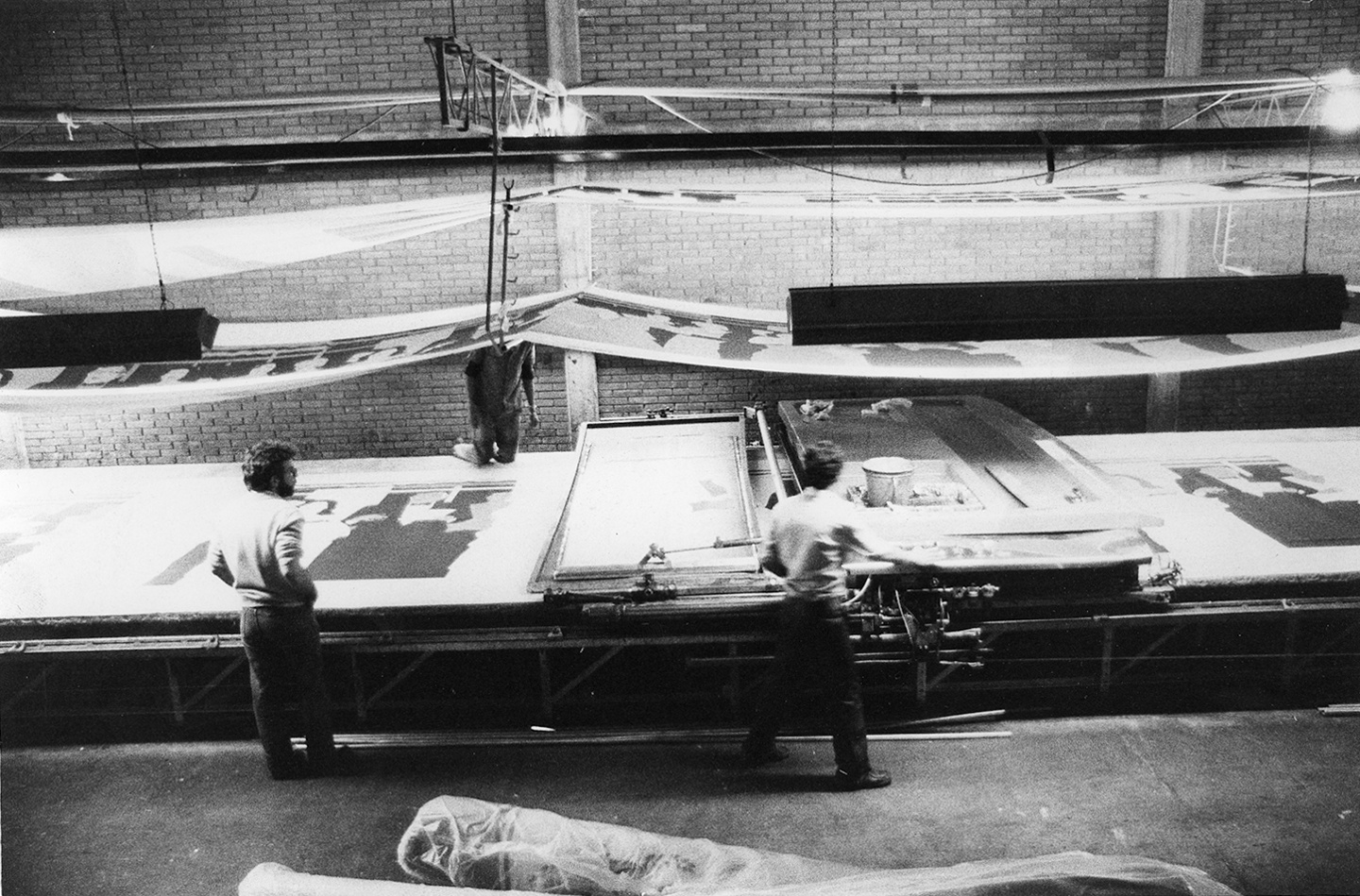Beatriz González began her artistic practice in the early sixties in Bogotá, where she studied architecture and painting, as well as art history with the critic Marta Traba. In her pictorial investigations, González, who was born in 1933 in Bucaramanga, has long appropriated images from Western art history and local newspapers, reshaping them through a language based on figuration, flat surfaces, and an eccentric color palette. Departing from the canvas format, she also explores everyday supports: curtains, furniture, and, more recently, wallpaper.
Although González has employed European masterpieces, from Vermeer to Picasso, since her first exhibition at the Museo de Arte Moderno de Bogotá, in 1964, she always displaces the original source, referencing instead the low-quality print reproduction of its “image” exported to the so-called Third World. An exemplar work is Telón de boca para un almuerzo (Drop curtain for a luncheon, 1975), a large acrylic painted on a curtain, which was exhibited at the Venice Biennale in 1978. Of it, the artist notes:
The curtain idea came from visiting the dusty Avenue Jimenez in Bogotá. In a shop window I found, next to bottles and snacks, one Salvat magazine with Le déjeuner sur l’herbe by Manet on its cover, ruined by the dirt and sun. It looked like a curtain or a circus tent painted with faded acrylics. That was what came to us from the moving and changing nature so pursued by the Impressionists.
González’s paintings, although reminiscent of popular iconography, contest the assumption of a universal culture; unlike Anglo-Saxon Pop art, she does not represent the ubiquitous conditions of consumerism but rather puts to question the semiotic markers of underdevelopment. Consider, for example, her “furniture pieces” exhibited at the 1971 Bienal de São Paulo, paintings assembled on metal tables and beds—Traba described González’s approach as “marginal art,” which one could argue the artist embraced as productive critique. Or her numerous works based on local newspaper images: Decoración de interiores (Interior decoration, 1981) consists of a serial image of Julio César Turbay, the president of Colombia from 1978–82, at a party printed on a large curtain. Or her recent work, Wiwa Stories (2015), that uses motifs drawn from the tragedy of the Indigenous Wiwa community, produced on wallpaper. Such works parody social and political aspects of Colombian life, critiquing the trivialization of violence and the irrationality of power. In turn, her work is instructive. Disowning the processes of mimicry and cultural dependency, González’s paintings also transform the experience of reception into that of critical appropriation.
—Paz Guevara


